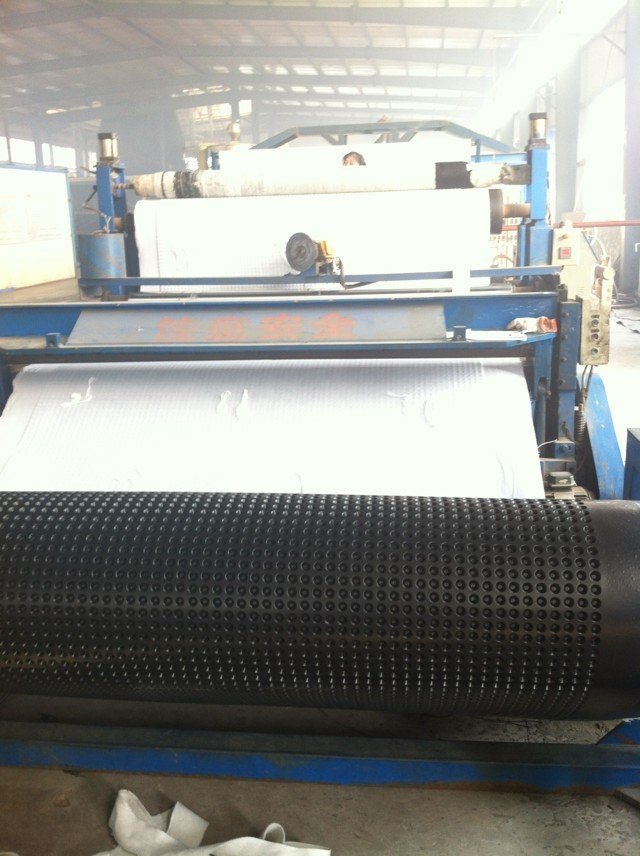- Understanding the Role of Geomembrane Liners in Waste Management
- Innovations in Geomembrane Liners for Water Management
- Geomembrane Liners: A Comprehensive Guide
- The Future of Geomembrane Liners in Civil Engineering
- Geomembrane Liners: Enhancing Landfill Stability
Manager:
WhatsApp:+86 177 0135 2670
Tel:+86 177 0135 2670
Email:marketing@okorder.com
Address:3rd Floor, No.2 Building, No.1 Sanlihe Road
HDPE Geomembranes: The Protective Solution for Ponds in Agricultural Ponds
Ponds have always been an integral part of agricultural landscapes, serving a multitude of purposes from irrigation to waste management. However, constructing and maintaining these ponds can be a challenging task, especially when it comes to ensuring their longevity and effectiveness. This is where hdpe Geomembranes come into play, offering a protective solution that is both durable and efficient.

The Role of Ponds in Agriculture
Ponds are more than just water bodies; they are vital for sustaining agricultural activities. They provide a source of water for irrigation during dry seasons, support aquatic life that contributes to the ecosystem, and can even be used for waste management. Despite their importance, ponds are often exposed to various environmental factors that can lead to their degradation over time. This is where the protective qualities of HDPE geomembranes become invaluable.
What Are HDPE Geomembranes?
High-Density Polyethylene (HDPE) geomembranes are flexible, durable sheets made from high-quality polyethylene resins. They are designed to provide a waterproof barrier and are commonly used in various applications, including agricultural ponds. HDPE geomembranes are known for their resistance to chemicals, UV radiation, and temperature fluctuations, making them an ideal choice for protecting ponds from the elements.
Benefits of Using HDPE Geomembranes in Agricultural Ponds
1. Waterproofing: One of the primary benefits of HDPE geomembranes is their ability to create a waterproof barrier. This prevents water loss through seepage, ensuring that the pond remains filled and functional throughout the year.
2. Chemical Resistance: Agricultural activities often involve the use of chemicals such as fertilizers and pesticides. HDPE geomembranes are resistant to these chemicals, protecting the pond's water quality and the surrounding environment from contamination.
3. UV Resistance: The sun's UV rays can be harsh on pond liners. HDPE geomembranes are designed to withstand UV radiation, maintaining their integrity and performance over time.
4. Temperature Tolerance: Extreme temperature changes can affect the structural integrity of a pond. HDPE geomembranes can handle these fluctuations without cracking or deforming, ensuring the pond's stability.
5. Longevity: With a lifespan of up to 50 years or more, HDPE geomembranes are a long-term investment for your agricultural pond. They require minimal maintenance and can save you time and money in the long run.
6. Environmental Protection: By preventing the escape of water and potential contaminants, HDPE geomembranes help in preserving the local ecosystem and preventing soil erosion.
Installation Process of HDPE Geomembranes
The installation of HDPE geomembranes is a straightforward process that involves several steps:
1. Site Preparation: The area around the pond is cleared and leveled to create a smooth, even surface.
2. Geomembrane Unrolling: The HDPE geomembrane is carefully unrolled over the prepared site, ensuring there are no wrinkles or folds that could compromise its integrity.
3. Seaming: The edges of the geomembrane are joined together using heat welding or other appropriate methods to create a seamless barrier.
4. Inspection: Once the geomembrane is in place, it is inspected for any defects or imperfections that could affect its performance.
5. Final Adjustments: Any necessary adjustments are made to ensure the geomembrane fits snugly and securely around the pond.
Maintenance and Care of HDPE Geomembranes
Proper maintenance is essential to ensure the longevity and effectiveness of HDPE geomembranes. Here are some tips for maintaining your pond's geomembrane:
1. Regular Inspections: Periodically inspect the geomembrane for signs of wear, damage, or punctures.
2. Cleaning: Keep the surface of the geomembrane clean and free of debris that could cause damage over time.
3. Protection from Sharp Objects: Avoid contact with sharp objects that could puncture or tear the geomembrane.
4. Monitoring Water Quality: Regularly test the water quality within the pond to ensure it remains safe and uncontaminated.
The Future of Agricultural Ponds with HDPE Geomembranes
As agriculture continues to evolve and adapt to new challenges, the use of HDPE geomembranes in ponds is likely to become even more prevalent. These protective solutions not only enhance the functionality of agricultural ponds but also contribute to sustainable farming practices by preserving water resources and protecting the environment.
In conclusion, HDPE geomembranes are a game-changer for agricultural ponds, offering a reliable and long-lasting solution to water management and protection. By embracing this technology, farmers can ensure their ponds remain a valuable asset for years to come, contributing to the overall productivity and sustainability of their land.
- Previous:The Interwoven Future: A Deep Dive into Geotextile Woven Fabrics
- Next:HDPE Geomembranes: The Protective Layer for Ponds in Environmental Pond Lining






